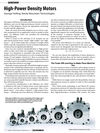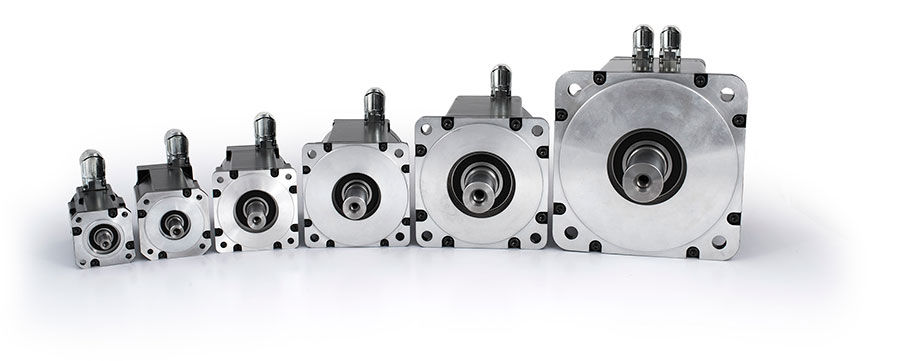While brush DC and AC motors are often very cost-effective, a modern high-performance brushless motor with Neodymium magnets will be significantly more expensive. The high cost is partially offset by having less need for cooling infrastructure but typically, there will be a cost penalty for using brushless PM motors. One of the main cautions when using PM brushless motors with Neodymium magnets is that these magnets are typically very sensitive to temperature, and these motors can be easily damaged if they get too hot, which is especially true when lower-cost Neodymium magnet grades are used.
A trade-off solution is reluctance motors, which often offer better efficiency and smaller volume than brush and AC motors, but they may have lower efficiency and a larger footprint; although, at a significantly reduced cost — especially for high-volume OEM applications. Another advantage of reluctance motors is that they have no magnets and they typically operate at higher internal temperatures than PM brushless motors, but safety requirements may limit the allowable operating temperatures.
However, in many pump applications, where we have cooling via the load medium, i.e. — automotive water pumps — you may be able to operate at higher internal temperatures while still maintaining safe, external operating conditions.
An electric motor will change its operating efficiency with speed, but also with torque load. A lightly loaded motor is generally less-efficient than one operated at rated power, which is especially true for AC induction motors, shunt DC motors and reluctance motors. As load is increased, the motors will continue to produce the required torque, but their efficiency will generally drop.
This KinetiMax high-power-density motor from Allied Motion is an outer-rotor design brushless motor designed for high-torque, lowcogging applications like robotics, AGVs, and hand-held power tools. (Photo courtesy Allied Motion)
Thus, the heat generated will increase disproportionately with the load. Sometimes we can use this to our advantage; e.g. — if we have an application that only occasionally requires high-torque/power output for a short time with sufficient cooling periods in between, and where torque/power performance is more important than efficiency. In such cases we can use a lower-rated, smaller and less-expensive motor to meet these high-load conditions for short, intermittent periods of time.
The ratio of peak torque versus crated torque varies greatly with motor technology. Some brush motors have little margin while modern brushless motors can often provide 5x or more peak versus rated torque. Reluctance motors are somewhere in between, with a practical ratio 3x or more peak versus rate torque.
If the motor needs to stay cool or operate very efficiently, you may want to chase a larger physical size that dissipates more heat since efficiency is also a function of the internal heat in the motor (windings and magnets).
We have already discussed the use of gearing, which can also be an effective way to reduce the size of an actuator package, i.e. — traction drives, conveyor belts etc. It must be remembered that the efficiency of the gear will be almost constant (hopefully, around 90+ %). Thus, if we boost our motor efficiency from, say 60% for a direct drive to 90% for a geared system, our overall efficiency increases from 60% to over 80%, which means less heat and often a much smaller system as well. It is beyond the scope of this discussion to address all the details that will be encountered — backlash, etc. That may be a paper all by itself.
The above has so far been only a discussion of motor technologies that excluded the drivers, where applicable. Different drive electronics, PWM switching frequencies, excitation waveforms etc., will further impact the motor efficiency, higher speed performance peak versus rated torque performance and, most importantly, the overall system cost which is, again, a subject worth a separate paper in itself.
As we can see from this discussion, the trade-offs are many and the specific decisions are complex. Most engineers that use actuators in their design are often ill-equipped to fully understand all of these factors.
Suppliers can be helpful, especially if you work with a good rep that offers many different product lines, while manufacturers have a tendency to steer you towards a specific equipment solution which may or may not be the best fit for your requirements.
Another suggestion is to consult with your peers and listen to their input, as they may have encountered similar challenges in their design. Sometimes you may simply want to retain an experienced consultant to assist you with sorting through this maze and help you find the best fit for your application while avoiding costly mistakes.
As always, when it comes to motor and actuators, there simply is no silver bullet solution and it is important to consider all aspects of the application that may lend itself to different solutions.







